Roots of Style: Shingle Style Is Back — Here's How to Spot It
What do so many of us find so alluring about a wood shingle? It could be that it is one of the simplest finish materials possible. Wood is an accessible and renewable resource that adjusts to several climates and can be shaped and applied in numerous ways. With age it softens in color, even when painted, and crinkles, emphasizing its organic relationship with us.
In the late 19th century, architects and their clients desired a departure from existing elaborate and fanciful Victorian designs. English and American Queen Anne architecture had run a popular course. That style was initially executed with brick exteriors in England, reinterpreted by Americans in wood and later elaborated with extravagant fretwork.
Shingle style eliminated the ornament; the Queen Anne shape was overlaid and gently wrapped with the conducive and versatile material, unifying the freely formed spaces into a comprehensible whole.
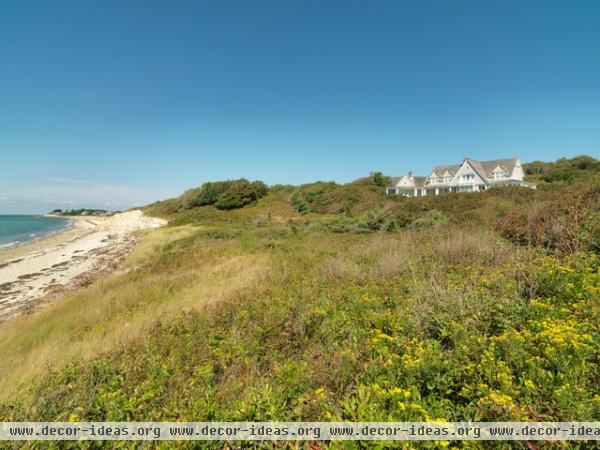
Shingle style originated in New England, crossing paths with and borrowing traits from colonial revival and Romanesque architecture. Because of this, combinations on the theme are broad. Its defining characteristics are the obvious shingle-clad walls and roofs, but there are also a few other characteristic elements applied in infinite combinations.
Peaceful settings. Original shingle architecture had a relatively brief period of popularity; it was built mostly between 1880 and 1900. At the time its primary patrons were wealthier individuals who hired prominent architects to design large, rambling, coastal homes in fashionable Eastern summer enclaves. Less formal interiors were designed with more open floor plans, departing from preceding Victorian themes and foreshadowing this significant 20th-century preference.
Promoted through pattern books, through magazines and by stylish followers, the trend modestly reached other parts of the country.
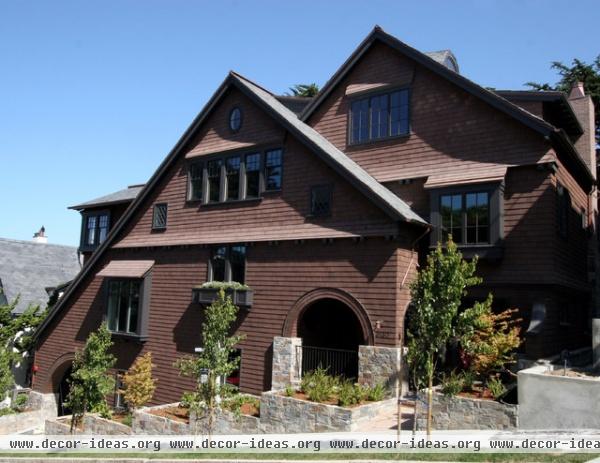
Features of Shingle-Style Homes
Restrained details. Compare this San Francisco example to other local Queen Anne houses, and you can see how modern this would have appeared in its time. Notice the restrained detailing and how the shingle texture unifies the house. Also noteworthy, this house has Romanesque shaped arches for its entrances.
The style faded from popularity in a rapidly changing 20th century. Plenty examples of it survived and were pampered, while a few landmark originals were lost to neglect, decay and indifference.
The 1975 documentary Grey Gardens, in which a shingle-style mansion sets the stage for a disturbing look into the troubled lives of a pair of Jackie Onassis' relatives, casts a somber tone over the theme.
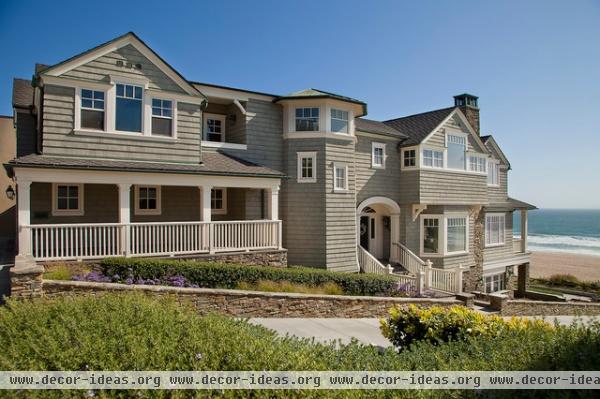
Large first-floor porches. Fast-forward 25 years to the beginning of the 21st century and visit this new California interpretation. "Shingle revival" best describes this once-again popular theme. In contrast to its ancestors and not evident in this photo, this house sits on a tight urban beachfront yet suits its location well. Large first-floor porches and the tower element hugging the main body of the house are common to the style.
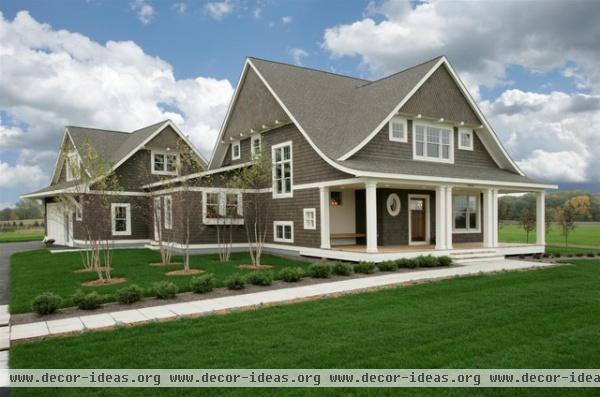
Strong rooflines. Roof shapes of the shingle style vary dramatically from one example to another but always dominate the impression of the house. Gable, hip, gambrel and shed roofs and dormers can all be found on shingle-style homes; in many cases they can even be combined on one house.
The cross gable shape, like this one, is one of the simpler designs. Notice the curved ascendance on the porch roof as well as the shed-roofed section near the garage. These details give this house a unique identity.
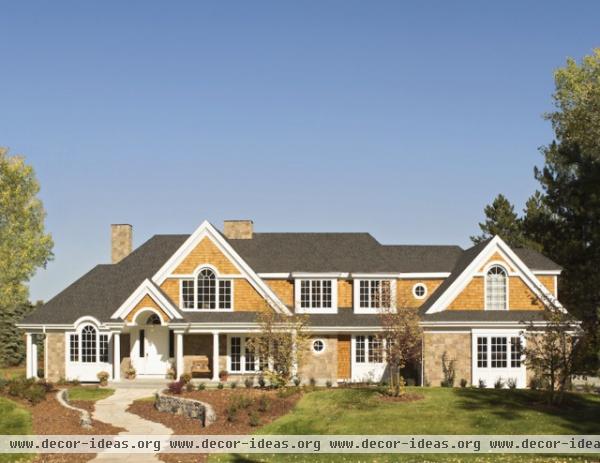
Palladian windows. In this new house, the Palladian window theme is set into two key positions on its elevation, establishing focal points for the complex arrangement of its elements. Classical details were not always found in the style, but when included they were similar to those found in colonial revivals of the same era.
Meet your home's classical ancestors
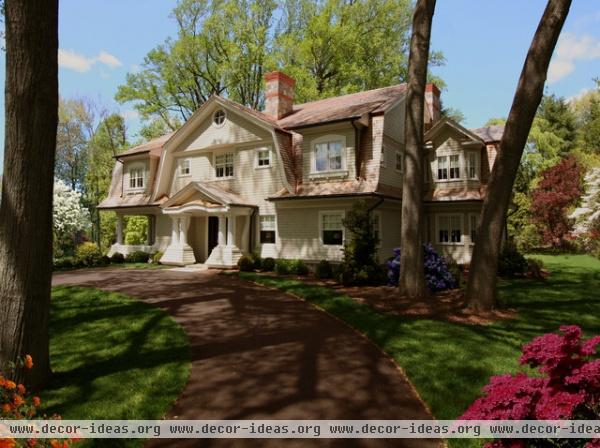
Gambrel roofs. As mentioned, gambrel roofs can be found in this style. They were inspired by colonial revivals and the Dutch colonial variants, which were normally much simpler designs and lacked shingle cladding.
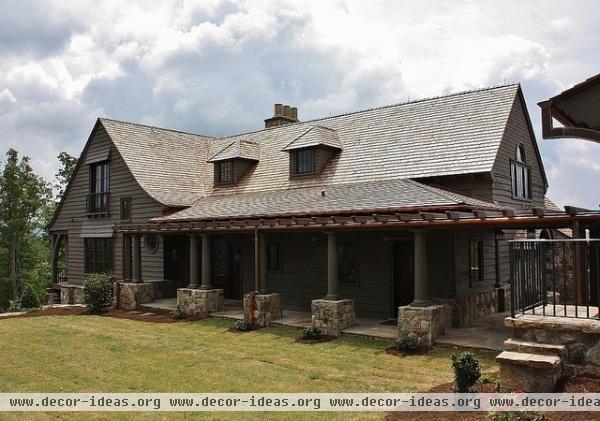
Dormer shapes. Notice that several examples here have shed or gable dormers, while this one has hip dormers. In shingle style the variations on such elements are wide and lend to the flexibility of the theme.
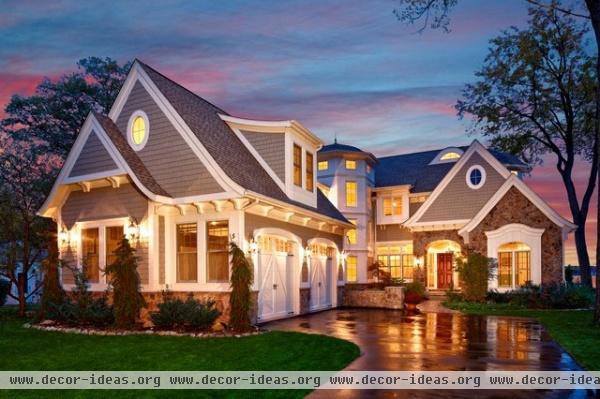
Modern tower. The scale of this house is considerably more modest than that of its East Coast ancestors, but much detail has been replicated to achieve the flavor of the originals. Notice the tower in the corner of the plan behind the garage doors. This element can be found on many originals and is popular in modern-day revivals.
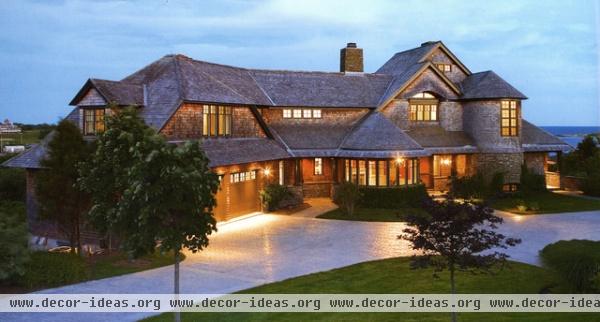
Rambling forms. This new Rhode Island house rests in the shingle style's native setting with ease. Original designs emphasized open floor plans and continue to be well suited for modern life, perhaps lending to the current popularity of this style.
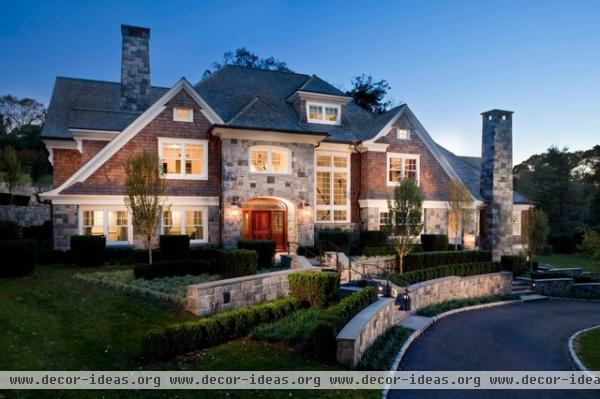
Stone details. Though many originals were mostly shingle clad, some combined shingles with stone. This modern version illustrates the compatibility of the two materials.
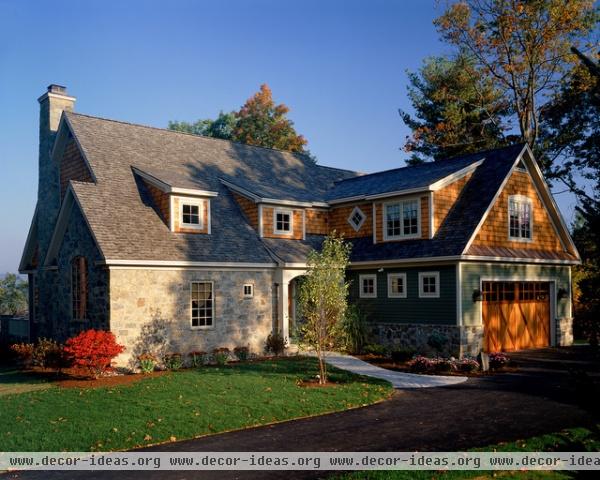
An intimate scale. Evident in this modest house is the ease of translating the theme to an intimate scale.
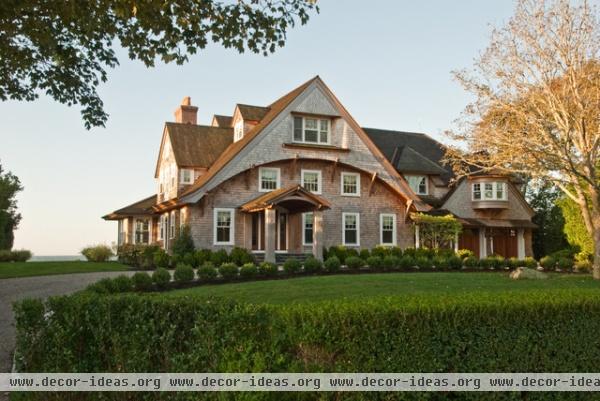
A detailed gable. Here the architects made the overhang of the gable end pronounced, which is a detail found in many original examples of the style. It's a distinguishing characteristic on this particular house.
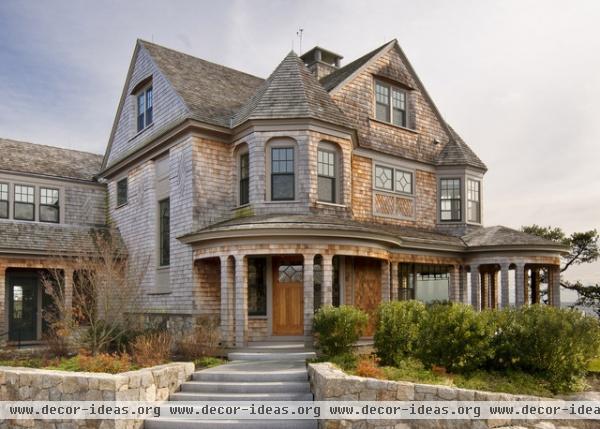
Variations on Shingle Style
Medieval form. The medieval Queen Anne form is apparent in this newly constructed shingle-style house. Notice how the shingles curve into certain window groups and how the top-floor windows have a brow above them.
Also authentic to originals are double-hung windows with divided lights on the top half only. The porch posts are wrapped in shingle, which was one of several options of the style. Some had simple classical columns, while others had massive stone- or shingle-clad piers at their porches.
Does your house have a medieval heritage?
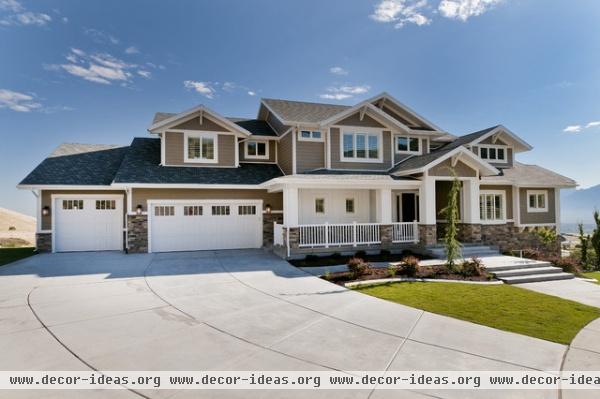
Vernacular renditions. Though this suburban Utah home is a loose interpretation of the style, the shingle inspiration is clear.
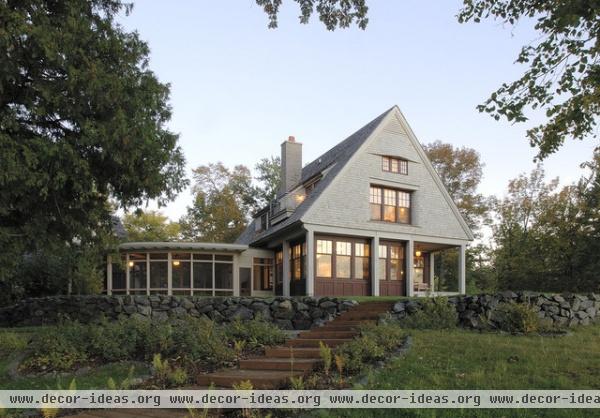
Streamlined versions. This fresh and clean-lined newer house holds on to some of the signature details of the style yet departs in a modern aesthetic.
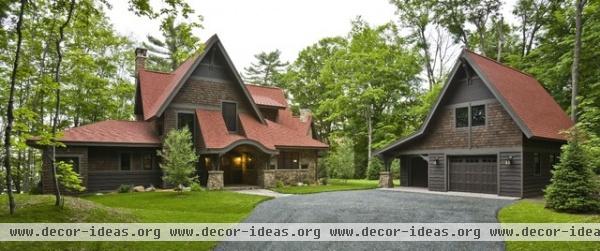
Contemporary twists. In some modern examples, the wood shingle roof has been replaced with more durable and longer-lasting asphalt shingles. The architect of the contemporary example shown here has created a unique statement by contrasting the darker body of the house with the dusty red roof.
More photos: Shingle could be one of the most popular revival styles in recent history. Search for exterior photos on Houzz, and you will find that many of the most popular are of the shingle revival.












